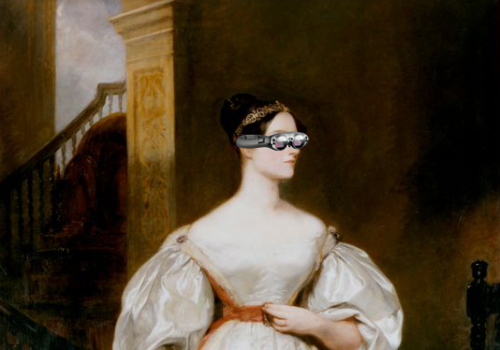
Immersive technology means you are able to place yourself inside a world, not just to peer inside it. Like all of the tech industry, extended reality features a diversity imbalance — is this burgeoning XR sector a chance for us to finally build a diverse corner of technology? And is its inherently first-person nature making it all the more important that diversity is pursued?
Today I am thinking about stories. Why? Because this morning I was reminded of the eternal Isaac Newton quote that “If I have seen further than others, it is by standing upon the shoulders of giants.†And I began to wonder who and what these giants may be in our world. Our urgent, cutting edge, immersive world.
The legacy of giants is very much alive in the everyday for us. Ada lives in each line of code, Steve in every swipe and Tom in every VR headset. Their work is alive in the hardware and the software that is used by nearly every single person both in our studio and on this planet. A commendable success, a feat that most certainly makes them giants amongst us mere mortals. To put it simply, their work altered our world and ourselves forever.
And with time this legacy of theirs has morphed into something far greater and most certainly far more human than I suppose they ever would have anticipated. Machines and solutions deemed as robotic and missing of human emotions — and human error — are being reimagined into something that really is very human. Their legacy has begun to remold the art of storytelling.
Storytelling is one of the most deep-rooted and empirical aspects of being human. We are all storytellers: in our minds as we think about the everyday, in the boardroom where we discuss future sales and in our homes as we raise our children, build lasting relationships and gorge on the works of J.K Rowling, Steven King, Charles Dickens, Jane Austin. Even our neighbor’s series of tweets about the big match tell a tale — at the core, these things that we do are all stories. And these stories encompass our visions of the future, opinions on the past and our interaction with the present.
Look at the applications we have devoured; Snapchat tells a story through quickly captured footage, Facebook tells a story through a status, Instagram through an image, Twitter through a microblog. We are all authors in those worlds.
But here in the corner of the tech industry that Draw & Code inhabits, we boast something quite magical; immersive technology. It is the wholehearted belief of many that immersive technology is one of the greatest gifts we have created as storytellers. Immersive experiences, particularly via VR, are about embodiment — you are in the shoes, or at least the eyes, of the protagonist. It’s not distant, there is no cinematographer — this is as close to living the story for yourself as it gets.
Yet, we are serving it an injustice. It is our job as the purveyors of this magic, to tell the story correctly. However, we cannot tell stories properly, fully, unless we have the experiences and the opinions of many. We cannot tell stories properly until we understand the many angles and focal points it’s viewed through. And so we bang on our drum that we need more diversity, but I often wonder if shouting about it is enough?
Surely if people knew how incredible this corner of technology was, they would come and join it? Society is clouded with old judgments and stereotypes, all too quick to assume that technical work is filled with only the things that a man can love, rather than the inspirational and incredible things that actually exist in our day-to-day life in this studio. At Draw & Code, I’ve found myself surrounded by and contributing to projects that take audiences back in time to the world inhabited by the Terracotta Army, make toys bursts into life in the palm of your hand, explored interior design solutions for leading retail brands. Immersive technology is in demand right now and it’s a passport to adventures across a multitude of sectors. And it’s the opportunity to work in teams filled with exceptional talent and exceptionally warm hearts — people love what they do in XR.
So we, like much of the XR sector, continue to work on our magic with our male-dominated teams and our solutions that enchant and excite. But how much could the output of the immersive industry be improved by looking beyond the current workforce? And while we will always enthrall the tech-savvy, could the products produced by this evolving industry have an even wider appeal if they were coming from teams that represented a bigger audience? Our immersive technology corner has a duty to encompass all and everyone, if at all possible. To awaken the minds and memories of the old, to excite the generation of tomorrow and to alter the thinking of those who can shape the world. Our corner has the potential to make more stories — in the home, in the workplace, on the bus. And, it will.
In immersive technology, our work is far from robotic and dull. We’re not just machines and code, we’re the people who will tell the stories of tomorrow and we want our stories to be whole.
This column reprinted with permission from Draw & Code.
- Why XR needs diversity - August 1, 2019
